Finding Your Perfect Rowing Machine: A No-Nonsense Guide
Let’s talk about rowing machines. You’ve probably seen them at the gym – those long, intimidating contraptions that somehow turn arm-pulling into a killer workout. And now you’re thinking about getting one for your home.
Smart move. Rowing is one of those rare exercises that works pretty much everything: legs, core, arms, back – you name it. Plus, it’s easy on your joints, which your knees will thank you for later.
But here’s the thing about buying a rowing machine: it’s like dating. The fancy one at your gym? That’s the equivalent of a first date at a Michelin-starred restaurant. Your budget-friendly home version might be more like a cozy dinner at your favorite local spot. Both can be great, but you need to set the right expectations.
Before you pull out your credit card, ask yourself: Will you use it? Not just for the first week when you’re riding that new-equipment high, but consistently? Because getting fit isn’t about having the prettiest paperweight in your living room – it’s about showing up, at least four times a week, ready to put in the work.
If you’re nodding and thinking, “Yeah, I’m ready for this commitment,” stick around. We’re about to dive into everything you need to know about rowing machines: what makes them tick, which types might suit your style (and your space), and how to make sure you’re not throwing money at something that’ll end up as an expensive clothes hanger.
Consider this your crash course in rowing machine shopping. It will discuss what these machines can do for you and how to pick one to help you reach your fitness goals.
Learn more in my complete guide below!
What Can A Rowing Machine Do For You?
Cardio and Weight Loss
Let’s talk cardio and fat loss first. Unlike that mind-numbing treadmill run, rowing gives you a full-body cardio blast that’ll have your heart pumping and lungs working overtime – in the best way possible. Your body becomes this excellent oxygen-delivery system, pumping nutrients to all the right places. And if you’re counting calories (who isn’t?), here’s something interesting: a 185-pound person can torch about 377 calories in 30 minutes of vigorous rowing. Not too shabby for sitting down, right?
Endurance and Strength
But here’s where it gets terrific. While sitting there rowing away, you’re conducting an orchestra of muscles. Your legs push, your core stabilizes, your back pulls, and your arms finish the job. It’s like a full-body party that invites everyone. The cool thing about rowers’ bodies? They don’t end up looking like bodybuilders – instead, they develop this lean, muscular, proportionate physique that looks like a Renaissance artist sculpted it.
The best part? You’re building serious endurance without even realizing it. Professional rowers use these machines during their off-season training, and if it’s good enough for them, it’s probably good enough for us mere mortals.
Low Impact
And if you’re worried about your joints (looking at you, former runners), rowing’s got your back – literally. Since you’re seated, your joints don’t take the same beating they would from running or jumping. Think of it as getting all the benefits of a high-intensity workout while being kind to your knees and ankles. Plus, unlike when you flew off the back of the treadmill (we’ve all been there), falling off a rowing machine is pretty impossible. You’re practically on the ground already!
Stress Reduction
Ever notice how the gentle back-and-forth of rowing melts your stress away? There’s something almost magical about it. After a day of endless meetings and email chains, hopping on a rowing machine feels like hitting the reset button. The rhythm takes over; you’re entirely in a different headspace before you know it.
Rowing Indoors
But here’s the best part – you don’t need to live next to a lake to get your rowing fix. Modern rowing machines bring all the benefits right to your living room. Picture this: you’re getting a killer full-body workout while catching up on your favorite Netflix show. No sunscreen, early-morning drives to the water, or expensive boat rentals are needed—just you, your machine, and whatever entertainment keeps you going.
Tracking your Performance
Want to geek out about your progress? Most rowing machines these days are fitness computers. They’ll tell you everything from how many calories you’re torching to your heart rate, speed, and even how powerful each stroke is. It’s like having a personal trainer built right into the machine.
And if you’re competitive (let’s be honest, who isn’t?), you’ll love this: the fancier models connect to the internet, allowing you to challenge other rowers worldwide. You can analyze your performance from every angle, track improvements, and join virtual rowing communities. It’s like having a global gym buddy network at your fingertips.
Types of Rowers
Let’s discuss rowing machines and what makes each type unique. It all comes down to how they create resistance—that force that makes you work harder with each pull. There are four main types, but here’s a little insider tip: most fitness pros these days skip right past hydraulic machines, seeing them as yesterday’s news.
Air Rowers: The Popular Pick
Think of these as the wind-makers of the rowing world. They have this cool fan wheel that spins faster the harder you pull, creating resistance through moving air. The best part? It feels like rowing – the harder you pull, the more resistance you get, like on water. The Concept2 Model D (the rock star of rowing machines) even lets you adjust how much air flows into the fan. Sure, they make this whooshing sound while you work out, but many people find it meditative.
Water Rowers: The Premium Experience
Now, these are the fancy ones. They use actual water and a spinning paddle to create resistance, and if you ask any serious rower, they’ll tell you this is as close as it gets to the real deal. Most come with beautiful wooden frames and create this peaceful splashing sound that makes you feel like you’re out on the lake. The catch? They’ll make your wallet considerably lighter.
Hydraulic Rowers: The Old School Option
Picture two pistons, like what you’d find in your car’s suspension system. These machines often come with two arms that mimic real rowing oars, which is remarkable in theory. They’re quiet and compact, perfect for small spaces, and won’t break the bank. But there’s a reason they’re falling out of favor – the resistance stays the same no matter how hard you pull, and many don’t even have a sliding seat. That means your legs miss out on a lot of the workout.
Magnetic Rowers: The High-Tech Choice
These clever machines, like modern exercise bikes, use magnets and electricity to create resistance. They’re whisper-quiet and usually more compact than their air or water cousins. While they also have fixed resistance levels (meaning pulling harder doesn’t increase resistance), they’re reliable and maintenance-free. Plus, they’re typically more affordable than air or water rowers.
Here’s something cool: Some manufacturers are creatively combining these technologies. Take the Sole SR500, for example. It’s primarily an air rower but uses magnetic resistance for an extra challenge. It’s like getting the best of both worlds.
Remember, choosing the right rowing machine is like picking a good pair of running shoes—it must fit your space, budget, and, most importantly, your fitness goals. Each type has its sweet spot; now you know what makes each tick.
What to Look for in a Rowing Machine
Let’s talk about what matters when shopping for a rowing machine. Beyond the resistance types we covered earlier, a couple of key features can make or break your rowing experience.
Size Matters: To Fold or Not to Fold?
Here’s the thing about rowing machines – they’re not exactly tiny. Air and water rowers, in particular, can eat up space like a hungry teenager at a buffet. But before you start measuring your living room in despair, there’s good news: many models fold up.
Most folding rowers have a clever design where the seat rail folds upward, saving you precious floor space when you’re not channeling your inner Olympian. And don’t worry – a folding frame doesn’t mean you’re getting a flimsy machine. They’re just as sturdy as their non-folding cousins.
Short on space? Consider a hydraulic rower. These compact champions are typically half the size of air rowers, perfect for smaller homes or apartments. They’re like the studio apartment of the rowing world – smaller, but still get the job done.
The Great Seat Debate
Now, let’s talk about something you’ll be spending quality time with: the seat. Most rowing machines come with what I’ll kindly call a “firm” seat – usually a contoured piece of plastic with some rubber padding. Before you run away screaming, hear me out.
These contoured seats might not look like your favorite armchair, but they’re designed this way for a reason. The shape helps you maintain proper form while rowing, which is crucial for effectiveness and preventing injury. It’s like having a built-in form coach.
Some manufacturers offer cushioned seats, which might sound more appealing, especially if you have lower back issues. But here’s the truth: whether you choose padded or cushioned, you might initially experience some discomfort. It’s just part of the rowing journey – like getting used to a bicycle seat.
The good news is that if your seat is too firm, there’s an easy fix. You can always add a gel cushion—there are tons of options. It’s like upgrading your car seats.
Remember, the best rowing machine isn’t necessarily the most comfortable one at first sit – it’s the one that helps you maintain proper form and keeps you coming back for more workouts. After all, the most effective rowing machine is the one you’ll use.
The Seat: To Glide or Not to Glide?
Picture yourself on a real rowing boat. That smooth back-and-forth motion? That’s what you get with a gliding seat. It’s the gold standard for rowing machines, and for good reason – your legs get a fantastic workout. Think of it as the difference between doing a full squat and just bending your knees.
Now, you might see cheaper machines with fixed seats (usually hydraulic ones). Sure, they’ll get your heart pumping, but your legs will mostly take a coffee break. If you’re serious about rowing, stick with a gliding seat.
The Rail: Flat or Angled?
Here’s something interesting: most rowing machines, like real racing boats, have a flat rail. It makes sense – if you’re training for actual rowing, you want to mirror that exact motion. But then there are these rebels with slightly angled rails.
The angled ones are kind of like doing lunges on an incline. You’ll feel it more in your legs, which sounds great, right? Remember that if you’re training for actual rowing, this might teach you some habits that won’t work so well on the water.
Straps vs. Chains: The Great Debate
Do you need straps or chains for the part that pulls the machine? It’s like choosing between an old-school bike chain and a modern belt drive.
Chains are the tough guys of the rowing world. They’ll probably outlast your enthusiasm for working out, but they’re a bit high-maintenance. They need regular greasing, and sometimes, they’ll jump off track like a derailed train (usually right in the middle of your best workout).
Straps are like low-maintenance friends. They work without fuss, muss, or greasing and are surprisingly tough. But like a favorite pair of jeans, they’ll eventually wear out, primarily if the whole family uses the machine. Pro tip: If you choose a strap model, grab a spare when you buy the machine. It’s like having a spare tire—you might not need it, but you’ll be glad you have it when you do.
The choice comes down to your priorities. If you want something that’ll last forever and requires little maintenance, go chain. If you prefer something quieter and more straightforward, go strap.
Footplates: To Move or Not to Move?
Here’s the deal with footplates – you’ve got three options, each with perks.
Adjustable footplates are like the Goldilocks of the rowing world – you can tweak them until they’re just right. Set them once, and you’re good to go.
Then there’s the pivoting kind. Think of footplates as your feet’s best friend during a workout. They move with you throughout each stroke, which is pretty sweet for your ankles. If you’re getting up there in years or nursing an injury, these could be your new best friend. But I’ll be honest – some folks find them a bit wobbly. It’s like trying to do squats on a boat; some people love that extra challenge, while others want solid ground under their feet.
Last up are the fixed footplates. They’re like stubborn friends who won’t compromise—what you see is what you get. Most manufacturers nail the angle well, but you can always take the DIY approach if it’s not right for you. A small wedge or pad can work wonders.
The Brain of Your Rower: The Console
The basic consoles are like your trusty Honda Civic—they’ll provide the essentials: time, distance, speed, and calories. They’re nothing fancy, but they get the job done.
Step up to mid-range consoles, and you’re getting into Tesla territory. These bad boys track your strokes per minute, heart rate, and power output. Plus, they come with preset workouts when you’re not feeling creative.
But here’s where it gets interesting. Some modern consoles are like having a personal trainer, workout buddy, and video game rolled into one. They connect to the internet, let you race against other rowers worldwide, and track your progress over time. It’s pretty motivating to see yourself getting stronger week after week.
Is all this tech worth the extra cash? Well, that depends on you. If you’re the type who gets bored quickly or needs that extra push, these features might be worth every penny. But if you’re more of a “just give me the basics” person, save your money for a post-workout smoothie instead.
Things to Think About Before You Buy
Let’s talk about training goals first. Rowing machines are fantastic for cardio and toning – they’ll help you break a sweat and shed some pounds. But here’s the thing: while they’re great for getting lean and defined, they’re not your best bet if you’re trying to bulk up. Rowing is unique because it works pretty much everything from head to toe in one smooth motion.
Now for the elephant in the room: space. These machines can be pretty long—around 7 feet in some cases. That’s because you need enough room to stretch your legs out completely when you row. Before falling in love with a specific model, grab a measuring tape and ensure it’ll actually fit in your home. Some models fold up, which can be a lifesaver if tight on space.
What about noise? Most rowing machines are pretty quiet, except for air resistance models. These can sound like a fan on steroids when you’re going at it. But honestly? Once you’ve got your workout playlist going or your favorite show catches your attention, you probably won’t even notice.
Let’s be honest about money. Any exercise equipment is an investment in your health, whether you’re eyeing a rowing machine, exercise bike, or treadmill. While it might be tempting to go for the cheapest option, think of it this way: spending more upfront often means you won’t be shopping for a replacement next year. The good news? There are plenty of high-quality rowers that won’t destroy your bank account.
Finding Your Perfect Rowing Machine
Want the inside scoop? I’ve got a few brands in mind that consistently knock it out of the park regarding home rowing machines. Trust me, your future self will thank you for being picky about this.
Sunny SF-RW5515 Magnetic Rowing Machine
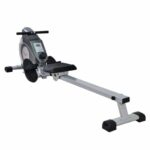
Affiliate Disclosure: As a Sunny Health & Fitness Affiliate Program participant, I earn commissions on purchases made through links in the post. Full disclosure
Want to know what’s cool about the Sunny SF-RW5515 rowing machine? It’s like having a personal fitness coach right in your living room. Just twist the resistance knob and boom – you’ve got eight different levels to play with. Whether you’re just starting or ready to tackle an intense workout, you can adjust it on the fly.
This thing’s built like a tank, so go ahead and row your heart out. You won’t have to worry about it wobbling or shifting around. Plus, the engineers thought about comfort (finally, right?) with a nicely cushioned seat that won’t leave you feeling like you just rode a horse for eight hours. And when you’re done, the whole machine folds up nicely and neatly, which is perfect for those who don’t live in a mansion. The display’s pretty basic, but hey, sometimes simple is what you need.
Sunny SF-RW5713 Rowing Machine
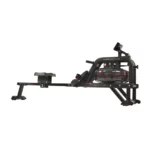
Affiliate Disclosure: As a Sunny Health & Fitness Affiliate Program participant, I earn commissions on purchases made through links in the post. Full disclosure
Let’s talk about the Sunny SF-RW5713 Water Rower, which brings the river to your living room (minus the mosquitoes). First, the manufacturers built it like a tank. The steel frame can handle up to 300 pounds, and thanks to its grippy handlebars and oversized pedals, you won’t have to worry about slipping off. They’ve also considered those sweaty workout sessions we pretend don’t happen.
Here’s where it gets cool: This rower uses actual water resistance with 16 hydro blades. Every pull feels like cutting through actual water—smooth, natural, and as challenging as you want it to be. The harder you pull, the more it pushes back. It’s like having an infinite gym buddy who always matches your energy.
Concept2 RowErg Model D Indoor Rowing Machine
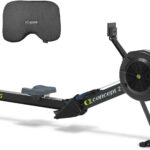 Affiliate Disclosure: As an Amazon Affiliate Program participant, I earn commissions on purchases made through links in this post. Full disclosure
Affiliate Disclosure: As an Amazon Affiliate Program participant, I earn commissions on purchases made through links in this post. Full disclosure
Ever wonder why every gym seems to have those Concept2 RowErgs? There’s a good reason. These machines are pretty special – they use air resistance, meaning they feel like you’re gliding across water. The coolest part? They adapt to you. Row like a lazy Sunday paddler, and it’ll take it easy. Channel your inner Olympian, and it’ll match your intensity stroke for stroke.
Here’s a fun fact: if you’ve ever hopped on a rowing machine at your local gym, chances are it was a Concept2. That’s also why so many people get bummed out when they buy a cheaper rowing machine for their home – nothing quite matches up to the smooth, responsive feel of a Concept2. It’s like comparing a kiddie pool to an actual lake.
WaterRower Natural Rowing Machine
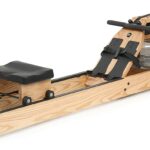 Affiliate Disclosure: As an Amazon Affiliate Program participant, I earn commissions on purchases made through links in this post. Full disclosure
Affiliate Disclosure: As an Amazon Affiliate Program participant, I earn commissions on purchases made through links in this post. Full disclosure
Have you ever seen a rowing machine that looks so good you’d want in your living room? That’s the WaterRower Natural for you. Built from gorgeous Ash Wood with a warm Honey Oak finish, it’s furniture that happens to give you an incredible workout.
But here’s where it gets cool: this beauty uses actual water instead of those clunky resistance bands or magnetic systems. Yep, you heard that right. There’s a tank filled with water, and when you row, paddles spin through it – just like you’re out on an actual lake.
BodyCraft Pro VR500 Rowing Machine
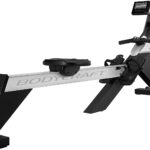 Affiliate Disclosure: As an Amazon Affiliate Program participant, I earn commissions on purchases made through links in this post. Full disclosure
Affiliate Disclosure: As an Amazon Affiliate Program participant, I earn commissions on purchases made through links in this post. Full disclosure
Let’s talk about the BodyCraft VR500 – a rowing machine that might make your wallet a bit lighter, but trust me, it’s excellent fitness equipment.
What makes it unique is that it uses both air and magnetic resistance. It’s like rowing on actual water, minus the splashing and that one friend who always rocks the boat. This dual-resistance system isn’t just for show—it’s why you’ll often spot this exact model in professional training facilities.
What I love about this machine is how it turns your living room into a full-body workout zone. Every pull targets pretty much every muscle you’ve got.
Picking the Perfect Rowing Machine Summary
You’ve probably heard of the big names – Concept2, Stamina, WaterRower – they’re like the Apple and Samsung of the rowing world. But here’s the thing: new companies are constantly popping up with incredible features that might work better for you. What matters is finding the right match for you. Your perfect rowing partner must fit your space, match your fitness goals, and feel right when you use it.
Look, spending money on a rowing machine isn’t like buying a pair of socks. It’s a serious investment in your health, and getting it wrong can mess with your wallet and workout goals. Take your time. Read reviews. Compare features. It’s okay to be picky—in fact, I encourage it.
And trust me, it’s worth the effort. Rowing machines are gentle on your joints (goodbye, knee pain!), but they still give you a workout that’ll have you feeling it from your shoulders to your calves. The best part? You can torch anywhere from 300 to 800 calories in an hour, depending on how hard you go and your weight and fitness level. It’s not too shabby for something you can do while watching your favorite show.
Important Safety Note:
As with any new exercise program or equipment, it’s essential to consult your physician to ensure the equipment is safe for you to use. It is especially crucial if you have any medical or physical conditions impacting your ability to exercise properly or putting your health at risk. Additionally, if you’re taking medication that affects your heart rate, blood pressure, or cholesterol level, your doctor’s advice is vital to create a workout plan that suits your needs.
Share Your Thoughts and Questions
I hope this in-depth guide of the Rowing Machine was helpful and informative. I encourage you to share your thoughts and questions on the topic. Have you used a rowing machine before? Your insights can help others make an informed decision. Additionally, I welcome any feedback about my website and suggestions for future content. Your input is invaluable in creating a supportive and informative community.
I look forward to hearing from you and continuing the conversation!
You May Also Like
Upright Bikes: Affordable and Effective Exercise Machines
Experience the Joy of an Indoor Cycling Bike: An In-Depth Guide
Stamina X Water Rower | Build Endurance and Full-Body Strength